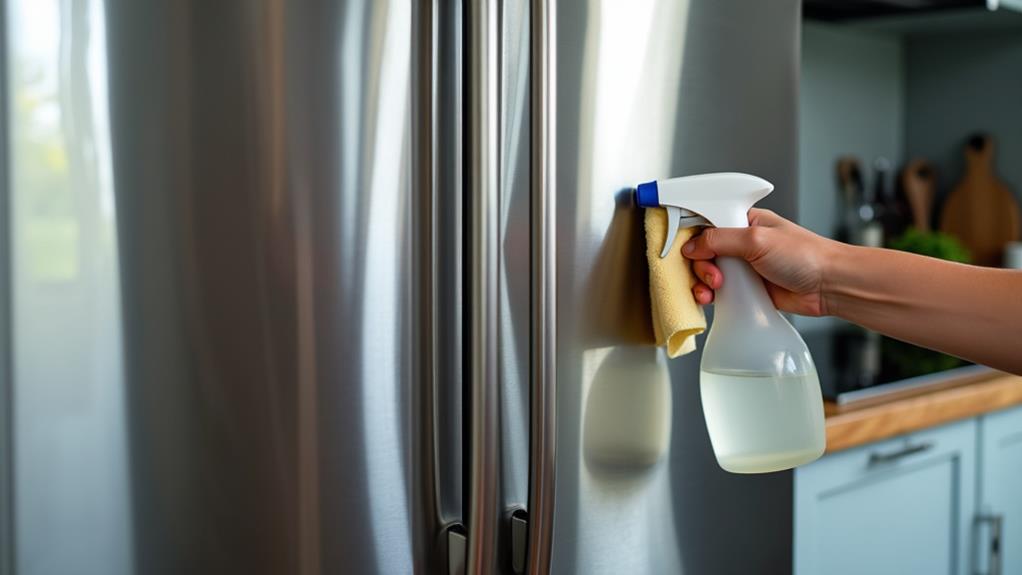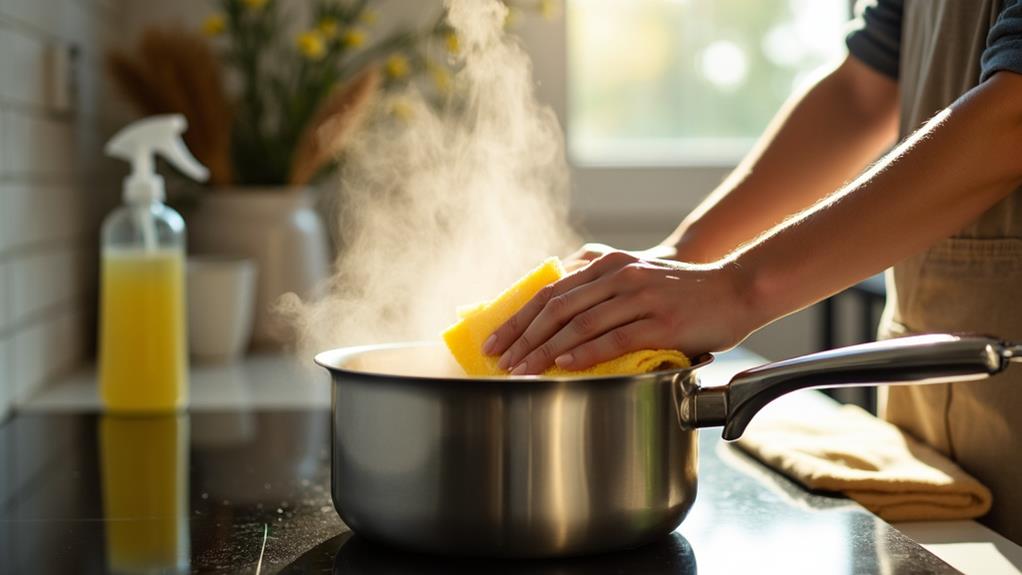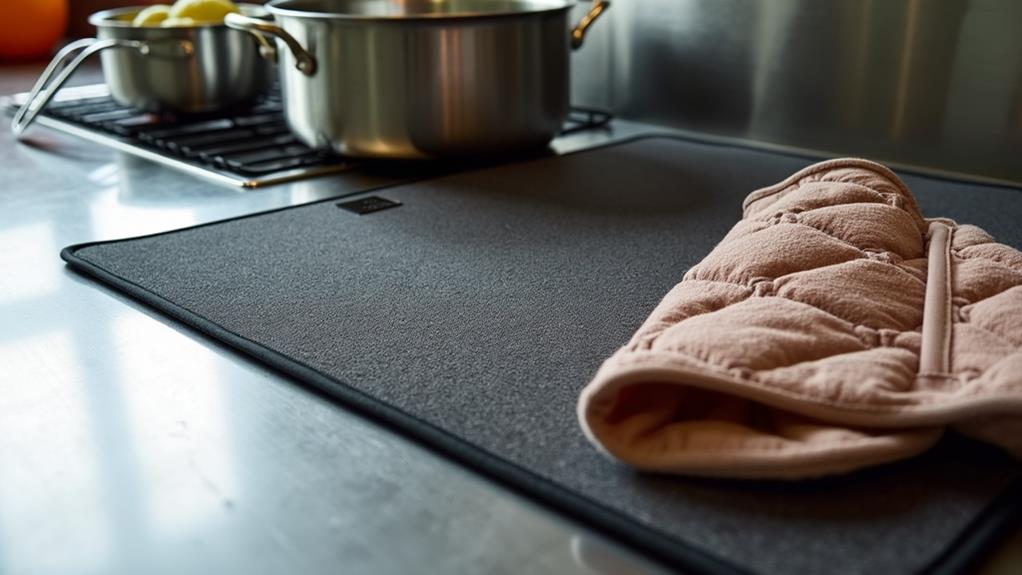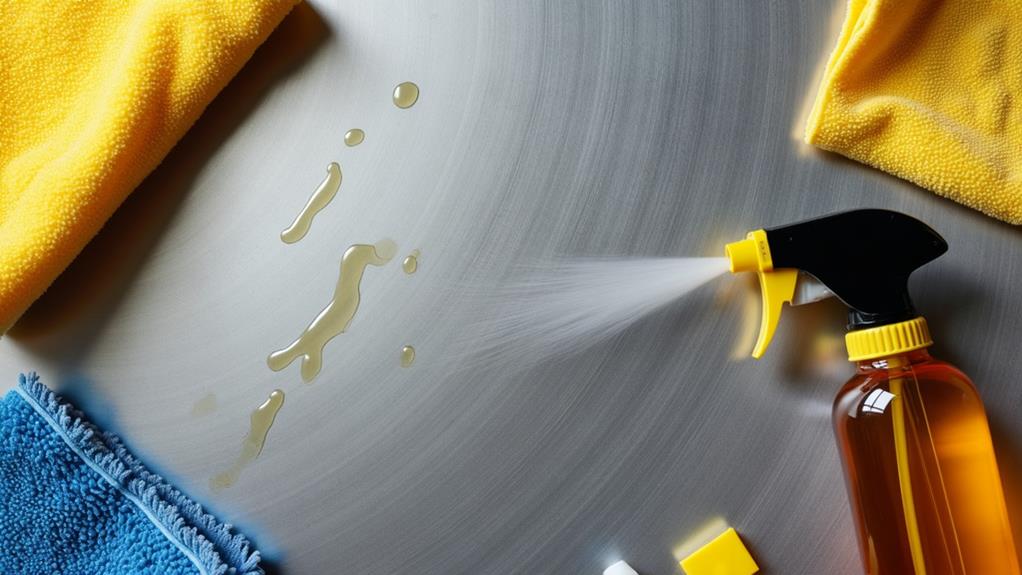How to Maintain the Finish on Brushed Stainless Steel
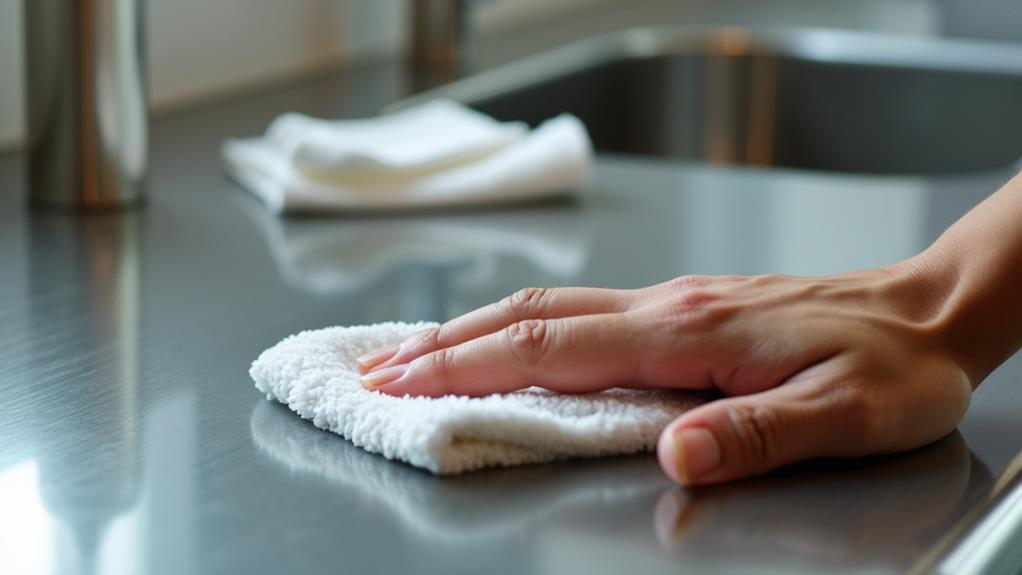
To maintain the finish on brushed stainless steel, establish a daily cleaning routine using a soft microfiber cloth dampened if necessary, and always wipe in the direction of the grain. Choose eco-friendly or commercial cleaners specifically formulated for stainless steel, and test them on inconspicuous areas initially. Avoid harsh chemicals like chlorine and ammonia, which can damage the surface. For fingerprints and smudges, a vinegar solution or a specialized commercial cleaner works well. Regularly polish using non-abrasive polish, and use protective coatings to prevent scratches. Follow these tips and uncover more ways to keep your stainless steel looking new.
Understanding Brushed Stainless Steel
Brushed stainless steel, with its distinctive texture and subtle shine, is a popular choice for modern appliances and fixtures. You'll find its appeal not just in aesthetics but also in practicality. The brushed texture effectively hides fingerprints and minor scratches, making it ideal for busy kitchens and bathrooms.
One of the standout features of brushed stainless steel is its corrosion resistance. This durability comes from the chromium content, which forms a passive layer of chromium oxide on the surface, protecting it from rust and stains. You won't have to worry about moisture or spills causing damage, which is particularly beneficial in environments prone to humidity or exposure to water.
Understanding how brushed stainless steel achieves its unique finish is also crucial. The brushed texture is created by a controlled, linear abrasion process. This technique not only improves its appearance but also adds to its toughness. It's a finish that's both functional and stylish, blending seamlessly with different design aesthetics.
Daily Cleaning Routine
To keep your brushed stainless steel looking pristine, incorporate a simple daily cleaning routine. Start by establishing daily habits that will prevent grime and fingerprints from accumulating. Each day, take a soft microfiber cloth as your primary cleaning tool. Microfiber is gentle on the brushed finish and effectively removes smudges without scratching the surface.
Begin by wiping down the stainless steel with the microfiber cloth, following the grain of the metal. This method guarantees you don't leave streaks and maintains the sleek appearance of the brushed finish. If you encounter stubborn spots or fingerprints, dampen a corner of the cloth with water and gently rub the area, always following the grain.
Make it a habit to dry the surface immediately with a dry part of the cloth to prevent water spots. Consistency is key, so get into the habit of performing this quick routine daily, ideally at the end of the day when usage is lower. By integrating these simple daily habits and using the right cleaning tools, you'll keep your brushed stainless steel looking immaculate and prolong its beautiful finish.
Choosing the Right Cleaner
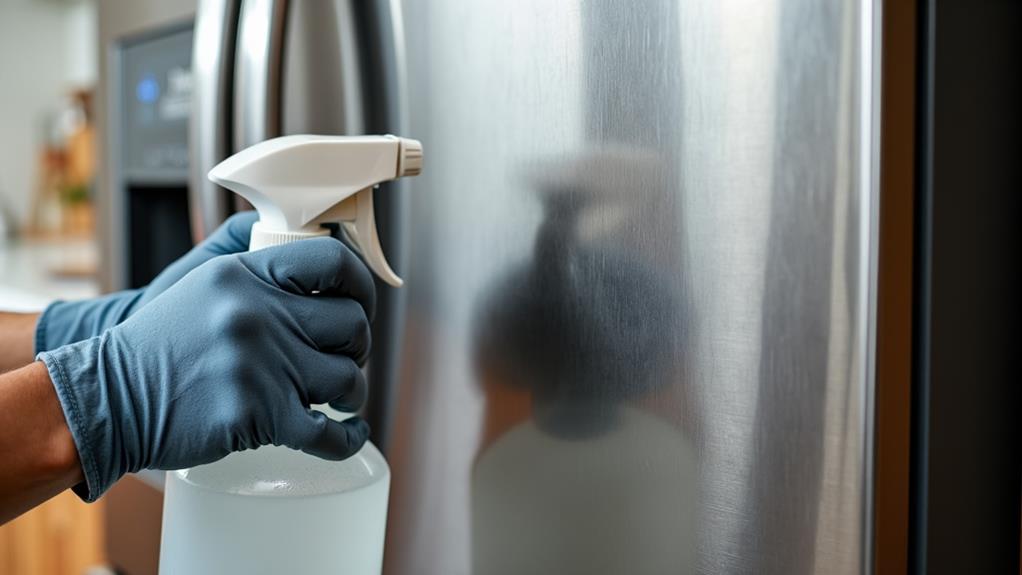
Choosing the appropriate cleaner is vital for maintaining the integrity of your brushed stainless steel. Begin by understanding your options. Eco-friendly options are a fantastic choice if you want to keep your home green and safe. These cleaners often use natural ingredients that are gentle on the environment and won't harm the finish of your stainless steel. Look for products labeled as biodegradable or non-toxic.
On the other hand, commercial products specifically designed for stainless steel can be highly effective. These cleaners are formulated to remove fingerprints, smudges, and other residues without scratching or dulling the surface. Popular brands often offer sprays or wipes that make the task quick and easy. When selecting a commercial cleaner, confirm it's labeled safe for brushed stainless steel to avoid any potential damage.
Always read the instructions on any cleaner you choose. Some might need to be diluted, while others are ready to use. Test a small, inconspicuous area initially to verify it doesn't affect the finish. By carefully selecting the right cleaner, you'll keep your brushed stainless steel looking pristine and extend its lifespan.
Avoiding Harsh Chemicals
While choosing the right cleaner sets the foundation for maintaining your brushed stainless steel, avoiding harsh chemicals is just as essential. Harsh chemicals can cause unwanted chemical reactions that may damage the finish, leading to dullness and potential corrosion. To keep your stainless steel looking its best, steer clear of cleaners containing chlorine, ammonia, or bleach. These substances can strip away the protective layer on the surface, making it more susceptible to scratches and stains.
Instead, opt for eco-friendly alternatives. Natural cleaners like vinegar and baking soda are fantastic for maintaining the finish without causing harm. Mix equal parts of water and vinegar in a spray bottle, or create a paste with baking soda and water. These solutions are gentle yet effective, ensuring your brushed stainless steel retains its shine and durability.
Removing Fingerprints and Smudges
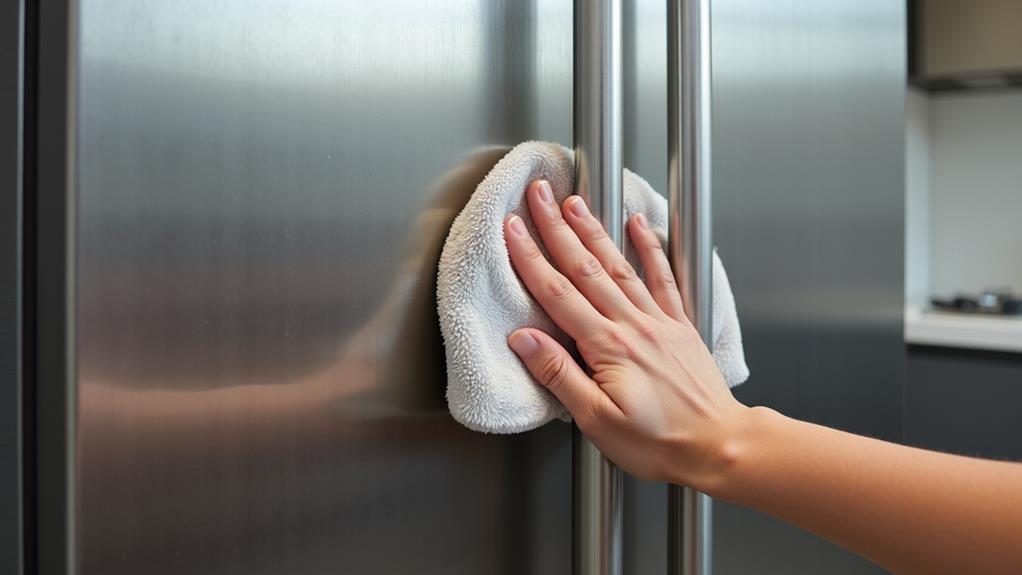
Getting rid of fingerprints and smudges on brushed stainless steel can feel like a never-ending task, but it's easier than you might think. Achieving smudge resistance and fingerprint prevention starts with the right approach and tools. Here's how you can keep your stainless steel looking pristine:
- Microfiber Cloths: Use a dry microfiber cloth to gently wipe away fingerprints and smudges. These cloths are soft and won't scratch the surface.
- Vinegar Solution: Mix equal parts of water and white vinegar in a spray bottle. Lightly mist the surface, then wipe it clean with a microfiber cloth.
- Olive Oil: Apply a small amount of olive oil to a soft cloth and buff the stainless steel. This not only removes smudges but also adds a layer of fingerprint prevention.
- Commercial Cleaners: Opt for stainless steel cleaners designed to improve smudge resistance. Follow the instructions on the product for the best results.
- Regular Maintenance: Wipe down your brushed stainless steel appliances and fixtures regularly to prevent buildup and make future cleaning easier.
Tackling Stubborn Stains
Stubborn stains on brushed stainless steel can be particularly challenging, but with the right techniques, you can restore its original luster. Initially, try using a mixture of baking soda and water as a natural abrasive. Apply the paste directly to the stain and scrub gently with a soft cloth, always following the grain of the steel. This method is one of the most effective cleaning methods for light stains.
For tougher stains, consider using white vinegar. Dampen a cloth with vinegar and rub it on the stain, again moving with the grain. Vinegar's acidic properties help break down the residue, making it easier to wipe away.
If these stain removal techniques aren't cutting it, a specialized stainless steel cleaner might be necessary. Apply a small amount to the stain and use a non-abrasive pad to scrub in the direction of the grain. Always rinse thoroughly with water and dry the area completely to prevent water spots.
Polishing for Shine
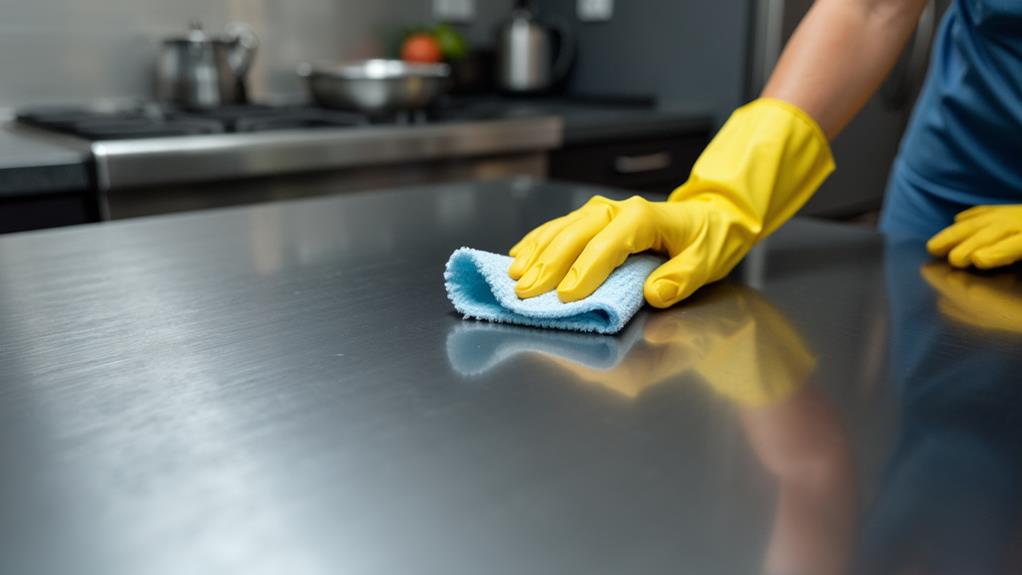
Polishing your brushed stainless steel is essential to maintain its sleek and elegant appearance. Start by choosing the right polishing techniques to improve the brushed texture without damaging it. Here's a step-by-step guide to help you achieve that perfect shine:
- Select the Right Polish: Use a non-abrasive stainless steel polish specifically designed for brushed finishes.
- Soft Cloth or Microfiber: Always use a soft cloth or microfiber towel to apply the polish. This prevents unwanted scratches on the surface.
- Follow the Grain: When polishing, move your cloth in the same direction as the brushed texture. Going against the grain can dull the finish.
- Apply Even Pressure: Use gentle, even pressure to guarantee a uniform shine across the entire surface.
- Buff Off Excess Polish: After applying, use a clean section of your cloth to buff off any remaining polish, assuring a streak-free finish.
Preventing Scratches
Protecting your brushed stainless steel from scratches is crucial to preserve its pristine look. Start by applying protective coatings specifically designed for stainless steel. These coatings form a barrier that reduces the risk of scratches and makes the surface easier to clean. You can find these in spray or wipe-on forms, and they're generally easy to apply.
Next, consider scratch resistant options for accessories and cleaning tools. For example, use microfiber cloths instead of abrasive sponges when wiping the surface. Microfiber cloths are gentle and won't leave scratches. Furthermore, avoid using harsh chemicals or abrasive cleaners, as they can damage the finish. Stick to mild soaps or specialized stainless steel cleaners.
Another key method is to minimize direct contact with hard objects. Place mats or coasters under items that could potentially scratch the surface, like pots, pans, or utensils. If you have stainless steel countertops, use cutting boards instead of cutting directly on the surface.
Lastly, be mindful of how you store your stainless steel items. Avoid stacking them in a way that they can rub against each other. By implementing these strategies, you'll keep your brushed stainless steel looking flawless and scratch-free.
Long-Term Maintenance Tips
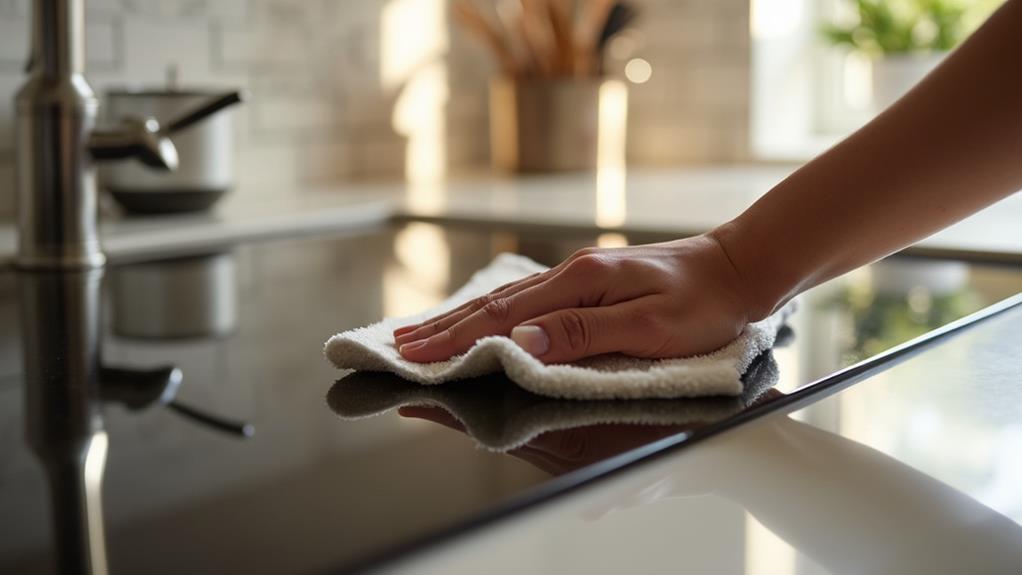
For long-term maintenance of your brushed stainless steel, establishing a regular cleaning routine is essential. Consistent care will keep your surfaces looking pristine and extend their lifespan. Initially, use maintenance tools like microfiber cloths and non-abrasive cleaners to prevent scratching. It's also a good idea to apply protective coatings to shield the surface from fingerprints and smudges.
Here are some tips to guarantee your brushed stainless steel maintains its beauty:
- Avoid Harsh Chemicals: Stick to mild detergents and avoid bleach or chloride-based cleaners, which can damage the finish.
- Dry Immediately: After cleaning, always dry the surface with a soft cloth to prevent water spots.
- Use the Right Tools: Opt for microfiber cloths and soft sponges. Avoid steel wool or abrasive pads.
- Polish Regularly: Use a stainless steel polish to restore shine and add a protective layer against contaminants.
- Inspect Frequently: Regularly check for scratches or damage and address them promptly to prevent further deterioration.

